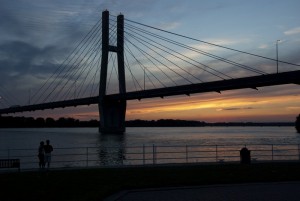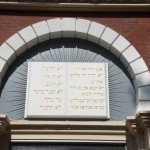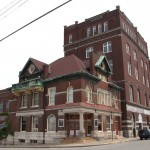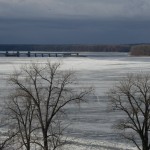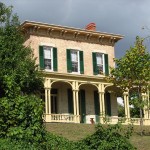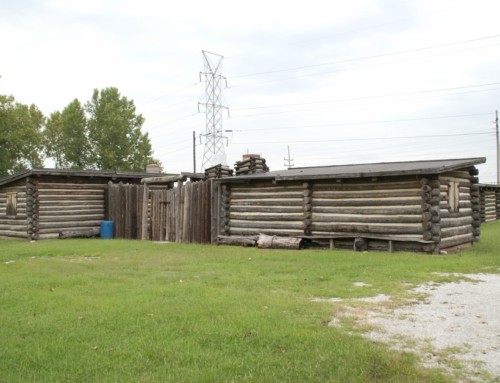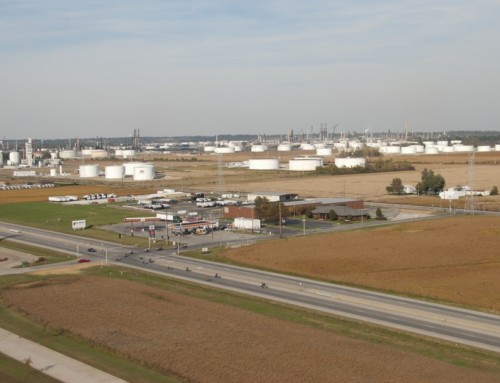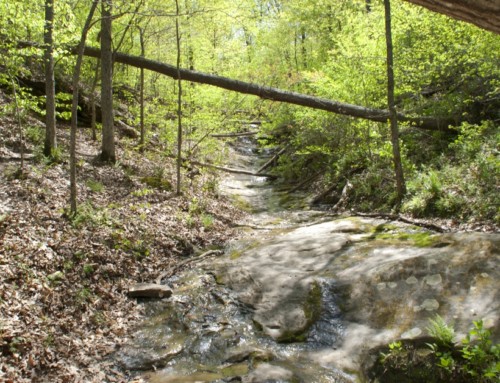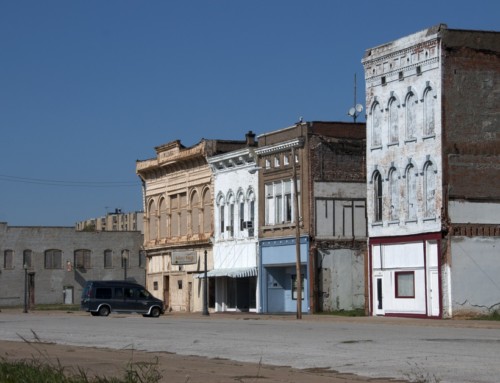Introduction
Nicknamed “Gem City of the West” for its outstanding collection of architecture, Quincy is a friendly place to visit with several attractions that are worth taking time to explore. The original city center is bouncing back and new restaurants are bringing a fresh approach to dining. Stick around for a couple of days and get to know this old rivertown.
Visitor Information
Visitors can load up on brochures and information at the Quincy Visitor Center (532 Gardner Expressway; 217.214.3700), located in the very cool (and scenic) Villa Katherine (see below).
History
In 1820, John Wood and Willard Keyes passed through west-central Illinois and liked the area so much that they came back a short time later to put down roots. Keyes returned in 1822 and built a cabin, while Wood came back shortly after, squatting near the current village of Atlas, Illinois where he farmed land that he didn’t own.
Wood would soon purchase land legally and move to the current location of Quincy. He was a New York native who left quite a mark on his new home. He actively fought an initiative to legalize slavery in Illinois that was defeated in a statewide vote in 1824. He served three terms as mayor of Quincy, then was later elected as state senator, lieutenant governor, and governor (winning election in 1860). He left the governor’s office in 1861and became active in the Civil War, first as Quartermaster General for Illinois, then—at 65-years old—as commander of the 137th Illinois Infantry.
Wood pushed for the creation of Adams County and got his wish in 1825; his hometown, Quincy, was named the county seat. The county and county seat were named after the newly elected sixth president of the United States.
Quincy had to fight to keep the county seat. On August 2, 1841, county voters approved moving the county seat from Quincy to Columbus. Curiously, 200 more votes were cast for the county seat question than for the congressional candidates in that same election, so Quincy interests naturally assumed fraud was involved. County commissioners refused to do anything about it, even after Judge Stephen A. Douglas upheld the validity of the results. The case was appealed to the state supreme court but before they could reach a decision, the Illinois legislature found a political solution. They voted to create a new county by lopping off the ten eastern townships of Adams County, which just happened to include the city of Columbus. The residents of the affected counties didn’t get to vote on the matter directly, however. The new county was first called Marquette then renamed Highland, but what they really should have called it was Unworkable. The new county flopped—it was too small to be viable—so in 1848, it was reunified with Adams County, with Quincy remaining as the seat of government. In 1875 Quincy faced another challenger, but this time voters safely rejected a proposal to relocate the county seat to Coatsburg.
Quincy organized as town in 1834 with maybe 700 residents, then received its city charter a few years later. The early years were often difficult. In 1833, cholera killed 43 of the town’s 400 residents. Another cholera epidemic in 1849 killed 400 people, including the mayor, Enoch Conyers.
Life was far from grim, however. A popular form of entertainment was corn husking. Pairs of men and women would team up to rip the husks off of corn in someone’s barn. If a woman’s husking turned up a red ear, she got a kiss from every man at the event; men likewise got the same privilege if they found a red ear, a kiss from every man. Just kidding. They got kisses from every woman. Once all the ears were husked, a violin player got busy playing, and they danced until the sun came up. The farmer who got all that corn husked for free, meanwhile, danced to the bank.
When folks weren’t husking corn or dodging cholera, they might have been busy exterminating the local wildlife. Native species of fauna were considered a great inconvenience by many people at the time, as those critters sure liked to eat the crops the farmers were trying to grow. Sometimes locals responded with a ring hunt. Someone would start the event by driving a pole into the ground on top of a hill to mark a spot. Men and boys from the area would gather into a circle around a perimeter as wide as 40 square miles and they’d begin walking and making enough noise to scare out the wildlife and drive it toward the pole. When the ring was finally small enough the huntsman blew a horn and then the real fun began as those men and boys would get busy killing as many animals as they could, with guns if it was safe or by clubbing or stabbing with pitchforks, if shooting was a bad idea. One of these hunts near Quincy reportedly killed 60 bears, 25 deer, 100 turkeys, and many more small mammals and rodents.
Quincy grew slowly between 1825 and 1834 but business began to pick up after the city incorporated in 1835. The single biggest force in the city’s early economy was the Mississippi River. Keelboats were the primary means of moving goods until the early 1830s when steamboats took their place. By 1853, Quincy was averaging about five steamboat landings a day during the ten-month long navigation season, a number that steadily increased until the Civil War.
Quincy’s status as a growing and major economic center was mirrored by (or perhaps fueled its) political influence around the State of Illinois before the Civil War. Three of its residents became Governor (Thomas Carlin, Thomas Ford, and John Wood), and three others became US Senators (Judge Richard M. Young, Orville H. Browning, and William A. Richardson).
Residents of Quincy initially welcomed Mormons as they fled persecution in Missouri, reaching the city in the winter of 1838-39. Even though some 6,000 refugees poured into the city of 1,600 residents, Quincyans found a way to meet their basic needs. Most of the refugees moved on to Nauvoo to help build a new Mormon holy city. In spite of the initial welcoming, however, public opinion in Western Illinois turned against the Mormons at Nauvoo a few years later. Many Quincyans were among those who joined the militias that drove the Mormons out, but other residents of the city helped negotiate a deal that ensured the Mormon community would have a peaceful exit from Illinois.
Lincoln-Douglas Debate
On October 13, 1858, Abraham Lincoln and Stephen A. Douglas squared off for their sixth and next-to-last debate in the Illinois US Senate campaign. The debate was a major social event, preceded by parades and picnics that culminated with 12,000 people packing into Quincy’s Washington Park to listen to the two men give their speeches. Lincoln spoke first, for an hour, then Douglas gave a 90-minute response; Lincoln closed the debate with a 30-minute rebuttal.
Much of the debate in Quincy focused on slavery. Lincoln opened by trying to refute Douglas’ charge that Lincoln pandered to voters by preaching abolitionism and racial equality in the northern part of the state, while downplaying his opposition to slavery when speaking to the state’s more southern (and pro-slavery) voters. Lincoln insisted that he was entirely consistent in what he told voters and quoted from one of his earlier speeches around the state:
I will say, then, that I am not, nor ever have been, in favor of bringing about in any way the social and political equality of the white and black races-that I am not nor ever have been in favor of making voters or jurors of negroes, nor of qualifying them to hold office, nor to intermarry with white people…
I have no purpose, directly or indirectly, to interfere with the institution [slavery] in the States where it exists. I believe I have no right to do so. I have no inclination to do so. I have no purpose to introduce political and social equality between the white and black races. There is a physical difference between the two, which, in my judgment, will probably forever forbid their living together on the footing of perfect equality, and inasmuch as it becomes a necessity that there must be a difference, I, as well as Judge Douglas, am in favor of the race to which I belong having the superior position…
I have never said any thing to the contrary, but I hold that notwithstanding all this, there is no reason in the world why the negro is not entitled to all the rights enumerated in the Declaration of Independence-the right of life, liberty, and the pursuit of happiness. I hold that he is as much entitled to these as the white man. I agree with Judge Douglas that he is not my equal in many respects, certainly not in color-perhaps not in intellectual and moral endowments; but in the right to eat the bread without the leave of any body else which his own hand earns, he is my equal and the equal of Judge Douglas, and the equal of every other man.
Lincoln went on to argue that the Supreme Court’s Dred Scott decision could force legal slavery onto states that currently prohibited it and accused Douglas of not taking a stand on what he would do if such a precedent were extended. Lincoln argued forcefully that slavery was a dangerous element in society and that the political divisions in the country depended entirely upon whether a person believed that slavery was morally wrong or not. He asserted his own belief that slavery was morally, socially, and politically wrong. In spite of his belief, though, he promised only to prevent new territories from adopting legal slavery, as he believed that the US constitution protected the existence of slavery in places where it was already practiced.
Douglas held fast to the view that whether or not slavery should be legal in a given state or territory was a matter to be determined solely by the residents of that state or territory by popular vote. He also took a shot at Lincoln’s assertion that the principles of the Declaration of Independence applied to everyone:
Up at Chicago, in the opening of the campaign, he [Lincoln] reviewed my reception speech, and undertook to answer my argument attacking his favorite doctrine of negro equality. I had shown that it was a falsification of the Declaration of Independence to pretend that that instrument applied to and included negroes in the clause declaring that all men were created equal.
Douglas used most of his time making essentially a legalistic argument about slavery—the Constitution permits it!—while Lincoln went after its moral foundations.
The debates were quite a spectacle, but, at that time, US Senators were chosen by the state legislature, not by a vote of the people. In the end, the Illinois Legislature, with its newly elected Democratic majority, picked fellow Democrat Stephen A. Douglas for the Senate seat.
After the Civil War
While the river played a major role in the city’s early economy, railroads were a major force after the Civil War. The Chicago, Burlington, & Quincy completed the first tracks to Quincy (in 1856), but eventually Quincy would be served by eight different railroads. The first railroad bridge across the Mississippi at Quincy was built in 1868; it served rail traffic until 1960 when it was replaced.
The city’s industrial base grew rapidly after the Civil War, fueling a population growth that took the city from 14,000 residents in 1860 to 36,000 by 1900. Some of the largest industries produced stoves, elevators, carriages, bricks, tractors and other farm equipment, pickles, and limestone (but no pickled limestone).
In 1879, the largest industry was tobacco processing, which employed nearly 1,200 people. Construction trades employed about 650, while the ice packing industry provided nearly as many jobs. Wagon works employed another 450 people and coopers about 350.
Beer was also a big industry. Among the city’s many breweries was the Dick Brothers Brewery, founded by three brothers who left Germany in 1852—Matthew, a cooper; John, a baker; and Jacob, a salesman. They moved to Quincy in 1856 and opened their brewery at 9th and York, attracted by the clear, cold water they saw bubbling out of a local spring. The Dick Brothers did well, selling their beer throughout the Midwest. They even managed to reopen after Prohibition, although they were much less successful. They survived a bankruptcy-induced reorganization in 1937 but had to close for good in the early 1950s.
Quincy’s first Jewish residents probably arrived here in the late 1840s. Within a decade, the community was large enough to establish B’Nai Avraham Temple; it opened on December 14, 1856 with 23 members. A few members broke away in 1864 to start a Reform Congregation called B’Nai Shalom, but the two synagogues merged in 1872. The current synagogue, Temple B’Nai Sholom (427 N. 9th St.), was dedicated on September 8, 1870. It was an optimistic venture, with room to seat over 600 people. In the front lobby of the temple, there’s a chart that shows the original seating arrangement when the Temple opened. The Moorish-inspired building had 80 gas lights and 3 chandeliers; the original light fixtures have survived, although they are now electric. The original towers were lost in a tornado. The organ in the balcony is among the oldest extant organs in Quincy. While there were 500 members at the time the building was completed, membership would never again be that large, dropping quickly in the ensuing years. By 1935, there were just 35 families and 110 dues-paying members. Even after absorbing the small Jewish congregation of Hannibal after their synagogue closed, membership remained modest in size. Facing declining membership, the synagogue closed in 2019.
In 1860, a group of Franciscans friars from Germany arrived in Quincy and founded St. Francis Solanus College in rented space at 8th and Maine. In 1871, the friars moved the university to its current location about a mile east of there. Their first building is now the eastern-most section of Francis Hall. An impressive Romanesque chapel was completed on campus in 1912. The college specialized in training Franciscan priests in those early years, but over time its mission has shifted as its name has changed. In 1970, the school closed its seminary and renamed itself Quincy College, while focusing more strongly on providing a liberal arts education. In 1993, it added a few graduate degree programs and became Quincy University. While all of the classes were taught by friars when the school was founded, few friars are part of the faculty today.
Both of Quincy’s primary founders, Keyes and Wood, were strong abolitionists, which may be part of the reason that the city had a number of Underground Railroad sites. As African Americans moved into Quincy—many before and during the Civil War—they founded churches (like the First Baptist Church at 8th and Elm), a baseball league, and fraternal organizations. African American migration to Quincy picked up in the years right after the Civil War and again around World War I.
The first African American priest in the United States, Father August Tolton, said his first mass in Quincy, at St. Boniface Church. Augustine Tolton was born April 1, 1854 in Ralls County, Missouri. Both of his parents were enslaved. His father, Peter Paul, is believed to have fought with the Union Army during the Civil War. His mother, Martha, escaped to Quincy with their children. Tolton attended school at St. Boniface for a brief time but apparently had to leave because some people objected to having a black child attend classes with white children.
In 1878, Tolton enrolled in Quincy College, thanks to the help of Father Anselm Mueller. The college, however, refused to admit Tolton into the seminary; he was eventually admitted to the College of Sacred Propaganda in Rome in 1880. Tolton was ordained on April 24, 1886 and said his first mass, at Quincy’s St. Boniface Church, on July 18, 1887. Tolton was first assigned to St. Joseph Negro Church, but his support from the congregation faded, so he left and founded a church for African Americans in Chicago. As he was building support for the new St. Monica’s Church, a severe heat wave hit Chicago; Tolton was among the victims. He died on July 9, 1897 and was buried back in Quincy, at St. Peter’s Cemetery. In 2010, the Catholic Church began the process of canonization. In 2019, Tolton’s case for sainthood advanced a step when Pope Francis declared him “Venerable.”
In the early 20th century, Quincy was home to several small companies that built boats. Cliff Padgett built racing boats, many dubbed Miss Quincy, which were numbered by version: Miss Quincy I rolled out in 1918.
O.F. Christner ran Quincy Welding (later Quincy Precision Machine) from the late 1940s until 1984, transforming the world of boat racing by putting his energy into improving the motors. His first breakthrough was a modified Mercury outboard motor, but later he designed and built outboard motors from scratch, like the Quincy Looper that was introduced in 1963. Christner was an accomplished racer himself, winning a race in 1948 with a boat he also called Miss Quincy.
The railroad continued to be an important factor in Quincy life in the 20th century. The Chicago, Burlington, & Quincy built an elaborate, Romanesque station in 1899, with tall arched windows and a tower that rose high above the riverfront. One of the more memorable trains to serve the Quincy area was the sleek, Art Deco-inspired Zephyr. The Mark Twain Zephyr began its service in October 1935, running along the Mississippi River between St. Louis and Burlington, Iowa, with stops in river towns like Hannibal, Quincy, Keokuk, and Fort Madison. Rail service eventually declined, however. The grand rail station by the river closed in 1953 and most of it had been razed a decade later; the Zephyr ended its run in May 1963.
Like many other Midwestern cities, Quincy struggled with the loss of manufacturing jobs beginning in the late 1970s. Motorola closed a plant in 1978, eliminating 3,500 jobs. Three years later the Electric Wheel plant closed, cutting another 1,500 jobs. The county unemployment rate jumped from 5.5% in 1979 to 12.6% in 1982. That was the worst of it, though, as the city’s economy has steadily diversified. While the health care and education sectors employ the largest number of people in Quincy today, manufacturing is still robust with companies like Knapheide (truck bodies and truck beds), Titan Wheel (off-highway wheels), and ADM (food processing).
**Quincy is covered in Road Tripping Along the Great River Road, Vol. 1. Click the link above for more. Disclosure: This website may be compensated for linking to other sites or for sales of products we link to.
Exploring the Area
Housed in the imposing Newcomb-Stillwell mansion, the Quincy Museum (1601 Maine; 217.224.7669) is really several attractions in one. Much of the first floor is maintained as a historic house, where you can check out the gorgeous woodwork and elegant 19th century craftsmanship. The second floor has rotating displays on the region’s history, while the third floor is set up with exhibits on natural history and Native American history.
The former mansion of Governor John Wood (425 S. 12th St.; 217.222.1835), completed in 1835, has 14 rooms of faithfully maintained Greek Revival architecture, complete with some original furnishings and many others from the period when the Woods occupied the house. The house was originally built across the street, so when Wood wanted to build a new mansion, this house was cut in half and moved (and carefully raised over a flower bed that Mrs. Wood wanted to protect). Wood built a very cool octagonal mansion on the old site of the house and his son occupied the relocated mansion. Sorry to say, but while the original, Greek Revival mansion has survived, the octagonal mansion has not.
Tucked away in an old part of the Illinois Veterans Home, the All Wars Museum (1707 N. 12th St.; 217.222.8641) has artifacts from pretty much every war the US has ever fought in. Among the most impressive items are the original flags, uniforms, and prints (open March to early Dec.). The museum also has a diorama of the D-Day invasion that includes a 40-second sound clip from the actual invasion.
Dr. Richard Eells was an anti-slavery activist who risked his own life and fortune to help hundreds of enslaved people escape to freedom. Tours of the Quincy Underground Railroad Museum (415 Jersey St.), built in 1835, describe Eells’ life and role with the secret network of freedom advocates. The home has been restored to its 1840-era appearance, and tours also highlight the building’s architectural influences. Call for tour times (217.223.1800).
The Lincoln Douglas Debate Interpretive Center (128 N. 5th St.; 217.223.5099) has educational panels on the content and context of the debate that took place across the street in Washington Park.
Washington Square (Maine at 4th Street) was the site of the sixth Lincoln-Douglas Debate and hosts a number of community events.
The Dick Brothers name may no longer be associated with beer production, but the brewery complex they built has found new life. The Dick Brothers Brewery Museum (917 York St.; 217.242.9567) features a few exhibits about the brewery’s past, plus you can take a guided tour through the caves and hallways of the old complex.
The History Museum (332 Maine; 217.214.1888), new in 2015, is housed in the former city library that later housed the Gardner Museum of Architecture; they inherited some of those artifacts, but most of the museum’s exhibits focus specifically on Quincy history and will be temporary.
One of the more unique pieces of architecture along the Mississippi River, the Moorish-inspired Villa Katherine (532 Gardner Expressway; 217.224.3688) was built by travel-fanatic George Metz in 1900 (and named for his mother). Metz based the design on sketches he made during his adventures around the world. He only lived in the house for about 12 years before selling it to a railroad that considered building a switching yard on the site. The yard was never built and the house survived multiple ownership changes before it was purchased by preservationists in 1978. It now serves as Quincy’s Visitor Center. You are welcome to wander around and check out the courtyard, reflecting pool, and other unique features of the house.
The 1930s Ag Museum (1435 Boy Scout Rd.; 217.223.5099) houses a private collection of vintage John Deere farm equipment and artifacts of rural life in the early 20th century. Call to arrange a free tour.
Lock and Dam 21 (217.222.0918), just south of town on Highway 57, is a fun place to watch boats locking through in summer; in winter, it’s a popular place to watch bald eagles.
Parks Along the River
One hundred thirty-acre Quinsippi Island once had a “Sky Cruiser” aerial tram that ran a one-mile round trip to the island from the city. The tram is long gone, but today you’ll find the Pioneer Mississippi Valley Village, a marina, and good river views.
Quincy has a string of parks along the river and Quincy Bay:
• Bob Bangert Park (North Bottom Rd.) has a boat ramp and shore fishing.
• All America Park (Front & Cedar Sts.).
• Lincoln Park (1231 Bonansinga Dr.) has a small playground and the offices for the Park District.
• Kesler Park (Bonansinga Dr. north of Clat Adams Park) has a boat ramp, shore fishing, a couple of murals, and a display showing historic river crests for Quincy.
• Clat Adams Bicentennial Park (Front and Hampshire Sts.), named for the long-time riverfront store owner, has great views of the river and Quincy’s bridges; it is the site of many community celebrations, including the 4th of July.
• Edgewater Park (Front and York Sts.) also has good views of the riverfront.
There are also several scenic bluff-top parks:
• Parker Heights Park (North Bottom Rd.) is closed to auto traffic and the old roadway has been integrated into Bill Klingner Trail system.
• Gardner Park (3rd St.) is adjacent to Sunset Park and is fine place for a stroll or picnic lunch.
• Sunset Park (3rd and Cedar) has a good overlook of the Mississippi River; it is between Gardner and Riverview Parks.
• Riverview Park (2nd and Chestnut) has a good overlook and a statue of George Rogers Clark; it is just south of Sunset Park.
• Indian Mounds Park (5th and Harrison) sprawls over 37 hilly acres and has a couple of overlooks, a swimming pool, and plenty of places to picnic; the park also preserves several historic mounds as part of an interpretive trail that traces the region’s history from the last ice age to the arrival of Euro-Americans.
Culture & Arts
The Quincy Art Center (1515 Jersey St.; 217.223.5900) presents rotating exhibits of the works of local and regional artists.
Entertainment and Events
Farmers Market
You’ll find the seasonal farmers market in Washington Park (4th and Maine Streets) on Saturday mornings.
Festivals
Like many communities along the Mississippi, Quincy celebrates the winter return of bald eagles to the area. In Quincy, the Standing Bear Council sponsors a Winter Gathering, so the event has a strong focus on Native American cultural traditions (January; Oakley Lindsay Center, 300 3rd St.). The event is open to the public, but it still feels a bit like a big family reunion, which just adds to its charms. The event sometimes includes a chance to see a number of birds of prey up close (a bald eagle, owls, etc.).
One of Quincy’s signature events, the Dogwood Festival (217.222.7980) includes block parties, amusement park rides in Washington Park, and a grand parade down Maine Street.
In early June, Washington Park fills up with booths of area artists showing off their work for sale at Q-Fest.
Getting on the River
Rent a kayak (with paddles and life jackets) at a self-service kiosk and paddle around Quincy Bay. You’ll find them in Kesler Park (800 Bonansinga Dr.; 800.978.4748).
Tours
Stop by the Quincy Visitor Center (532 Gardner Expressway; 217.214.3700) and pick up a self-guided tour of the city’s impressive architecture and historic sites.
Where to Eat and Drink
Author’s Pick: Thyme Square Café (615 Hampshire St.; 217.224.3515) is a gem. The proprietors take a deep pride in the food they put out and pay attention to the smallest of details to make it all work. They purchase most of their raw materials from folks in the area and turn them into delicious made-from-scratch entrées for breakfast and lunch. My personal favorite is corned beef hash, which is cooked with big, juicy chunks of their rich house-made corned beef. I get hungry just thinking about it. If that’s not good enough, their space in a renovated storefront is open and beautiful, a joy to sit in.
If you’re looking to relax with a pint of locally-brewed beer, head on over to the Quincy Brewing Company (110 N. 6th St.; 217.214.5512). They have as many as 16 different beers on tap. They don’t serve food, but you are welcome to bring your own or order food from a local restaurant and have it delivered to the brewery.
Sip a pint or two in the atmospheric Ratskeller at the Dick Brothers Brewery (917 York St.; 217.242.9567).
Underbrinks Bakery (1627 College Ave.; 217.222.1831) has been pleasing Quincyans since 1929 with baked goods like cakes, bread, and pies. They are especially beloved for their angel food cupcakes. They also still bake and sell loaves of Boston Brown bread using the same recipe they used when they opened in 1929.
The Pour Haus (625 Main St.; 217.214.7687) prepares your favorite coffee drinks (and some adult beverages) in a historic building with exposed brick walls and wood floors near downtown. The entrance is off the alley in the back in the building. They also host live music and other events on some evenings.
Riverside Smokehouse (222 S. 3rd St.; 217.214.7675) can satisfy your crave for smoked meat. They offer generous meat platters with good sides at reasonable prices.
The Abbey (1736 Spring; 217.228.8868) is a busy neighborhood tavern/restaurant near Quincy University with an extensive menu, ranging from sandwiches and salads to steak and seafood entrées.
Tiramisu (131 N. 4th St.; 217.222.9560) serves good Italian dishes from pizza to pasta in a historic downtown building. They can be busy on weekend nights.
At The Maine Course (626 Maine; 217.222.6244) the emphasis is on fresh, so the menu changes frequently. You can count on fine dining in a relaxed setting with friendly and attentive service without pretense.
Where to Sleep
Chain motels and hotels are nearly the only options in Quincy. If you want something with more character or locally-owned, check out Hannibal, Missouri, which is about a 20-minute drive from Quincy.
Camping
Driftwood Campgrounds (2300 Bonansinga Dr.; 217.222.7229; closed Nov to mid-March) caters primarily to RVs but they do have room for tents, too; the campground is located in a scenic spot at the foot of a bluff and across the road from Quincy Bay.
Bed-and-Breakfasts
Lighthouse Lane Bed & Breakfast (3404 State St.; 217.257.5101) began life as a farmhouse in the 19th century. Today, you can rent one of the two spacious rooms accented with plenty of country charm.
Getting There
Quincy Regional Airport (1645 Highway 104; 217.885.3262) has several daily flights to/from St. Louis on Cape Air; the airport is about a 15-minute drive from downtown Quincy. Even if you don’t have a flight to take, it’s worth the drive to check out the cool modernist terminal designed by architect John Benya.
If you want to travel by train, Amtrak has two daily departures to Chicago: the Illinois Zephyr (not to be confused with the Zephyr of old mentioned above) has a scheduled departure from Quincy at 6:12 am, while the Carl Sandburg has a scheduled departure of 5:30 pm; the trip to Chicago takes about 4 ½ hours. Check with Amtrak for the latest schedule information, though. If you’re going to Quincy from Chicago, the Carl Sandburg leaves Chicago at 7:35 am, while the Illinois Zephyr leaves Chicago at 5:55 pm. Quincy’s Amtrak station is barely more than a brick gazebo on the edge of town (Wisman Ln at N. 30th St.); buy your tickets in advance.
Quincy is also served by Burlington Trailways/Greyhound buses; they pick up passengers at the transit station at South 7th and Jersey Streets. You should purchase tickets in advance.
Resources
- Quincy Public Library: 526 Jersey St.; 217.223.1309
- Public Radio: WQUB 90.3
- Newspaper: Herald-Whig
- Post Office: 3535 Locust St.; 217.224.4950
Where to Go Next
Heading upriver? Check out Ursa.
Heading downriver? Check out Marblehead.
Community-supported writing
If you like the content at the Mississippi Valley Traveler, please consider showing your support by making a one-time contribution or by subscribing through Patreon. Book sales don’t fully cover my costs, and I don’t have deep corporate pockets bankrolling my work. I’m a freelance writer bringing you stories about life along the Mississippi River. I need your help to keep this going. Every dollar you contribute makes it possible for me to continue sharing stories about America’s Greatest River!
Quincy Photographs
A Song for Quincy
Quincy by Quincy from Sunsmoke Riser (2009)
©Dean Klinkenberg, 2024, 2021, 2018,2013,2011
